中級スキーヤーなら、適切なカービングスキーが技術向上と斜面での楽しさを助けます。最適な選択をするために知っておくべきことは次のとおりです:
- 伝統的なカービングスキー:整備されたトレイルに最適で、ウエスト幅が狭く(70~80mm)、正確なターンのために明確なサイドカットがあります。安定していて自信を高め、クリーンなカービングターンに移行するスキーヤーに理想的です。価格は通常800ドルから1,300ドルの範囲です。
- Snowfeet*:コンパクトで手頃な価格の代替品で、150ドルから始まります。これらのmini skis(44~120cm)は軽量で持ち運びが簡単、多用途で、よりコントロールを求めるスキーヤーに最適です。バックパックに収まり、斜面からハイキングコースまでさまざまな地形で使えます。
クイックヒント:
- 長さ:中級者の場合、スキーはあごから目の高さの間に届く長さがコントロールしやすいです。
- 幅:硬い雪上での機敏さを求めるなら、ウエストは82mm未満にしましょう。
- Snowfeet*:携帯性と使いやすさが重要なら、これらは楽しく実用的な選択肢です。
伝統的なスキーでもSnowfeet*でも、選択はあなたの目標とスキーのスタイルに合ったものであるべきです。
スキーでカービングする方法 | 中級者のスキーヤーがスキッドターンからカービングターンへ移行する方法
なぜカービングスキーが中級者に最適なのか
カービングスキーは、ゲレンデでの正確で簡単なコントロールを提供することに特化しています。中級者がスキルアップを目指す際、これらのスキーは初心者用ギアと上級者用ギアのちょうど中間の完璧な選択肢です。楽しさと扱いやすさを保ちながら、スキルを磨くのに役立つよう設計されています。
カービングスキーの特別な点は?
カービングスキーは整地されたトレイルで輝きます。その特徴は、ターンを楽にし、クリーンなアークを描くのを助けるはっきりとしたサイドカットです。ウエスト幅は通常70〜80mmで、硬い雪上での機敏さを追求しています。人気のあるカービングスキーの一種であるピステスキーは、さらに狭いウエスト(68〜80mm)と13〜17メートルのターン半径を持ち、素早く鋭いターンに最適です。
カービングスキーのもう一つの大きな利点は、わずかなロッカーを持つ伝統的なキャンバープロファイルです。このデザインはスキーのより多くの部分を雪面に接触させ、フロントサイドやオールマウンテンスキーと比べて優れたグリップと安定性を提供します。多くのモデルはコアに金属を使用しており、特に整地されたコースでの安定性が向上します。
なぜ中級者スキーヤーはこれらを愛するのか
中級者のスキーヤーなら、まだスキッドターンからクリーンなカービングターンへの移行を練習していることでしょう。カービングスキーはエッジのグリップと安定性を高め、この変化を容易にします。エネルギーを節約しながら、ゲレンデでの自信を高めてくれます。
専門家は、中級者のスキーヤーには、やや幅広で、少しチップロッカーがあり、重すぎないカービングスキーを勧めています。これらの特徴はスキーを扱いやすくし、技術向上に集中できるようにします。さらに、カービングスキーはタイミング、エッジコントロール、滑らかな動きといった重要なスキルの習得を助け、スキーのレベルアップに欠かせません。
コロラドのスキーコーチ、ジョシュ・リンチはこう語りました:「このスキーは他のカービングスキーよりも生き生きとしていて、 damp感が少なく、FISスラロームスキーのような感じはしませんが、エッジをしっかりと保持できます。」
これらの利点があるため、カービングスキーが中級者に人気なのも納得です。しかし、伝統的な長いスキーと比べてどうでしょうか?
カービングスキー vs. 長いスキー
伝統的な長いスキーと短めのカービングスキーを比較すると、中級者にとっての利点は明らかです。長いスキーは高速で安定しているように感じますが、特に自信をつけている途中のスキーヤーには操作が難しいです。一方、短いカービングスキーはターンがしやすく、ずっと許容性があります。
伝統的な長いスキー(160~180 cm以上)はかさばり扱いにくく感じることがあります。一方、Snowfeet* Skiblades(65 cm、99 cm、120 cm)やSkiskates(44 cm)などのコンパクトなオプションは、かさばるギアを持ち運ぶ手間なく優れたコントロールを提供します。これらの小さなスキーは収納も簡単で、ルーフラックや追加スペースも不要です。
中級スキーヤーにとっては、効率的に学び、速やかに上達することが重要です。
SkiTalkの寄稿者Tom K.は完璧にまとめています:「純粋にカービングターンを学ぶのに理想的なスキーは、カービングを覚えた直後にすぐに使えなくなるスキーです。」
マウンテンガイド兼スキーインストラクターのDave Wolfは、「これはフロントサイドに特化したエキスパート向けの、硬い雪面や急斜面の整地でタイトなアークを描くための、卓越しているが要求の高いスキーです」と付け加えました。
ポイントは?中級スキーヤーには、成長に合わせて使えるギアが必要で、扱いにくかったりすぐに使えなくなるものではありません。特に短くて操作しやすいカービングスキーは、パフォーマンスと許容性のバランスが良く、ゲレンデでの上達を支える道具となります。
スキルレベルに合ったカービングスキーの選び方
カービングスキーを選ぶのは、見た目がかっこいいものを選ぶだけではありません。自分のスキルレベル、身長、スキーのスタイルに合ったものを選ぶことが大切です。適切な一対は、上達を助け、ゲレンデでの楽しみを増やします。あなたに合ったスキーを見つけるために考慮すべきポイントを分解してみましょう。
適切なスキーの長さの選び方
スキーの長さはスキーのパフォーマンスに大きく影響します。覚えておくべき基本ルールは?スキーはあごから頭のてっぺんの間に収まるべきです。
「一般的に、スキーの長さはあごから頭のてっぺんの間に届くべきです。より遊び心があり操作しやすい感覚を求めるなら短めに、速いスピードでの安定性を求めるなら長めにしましょう。」
中級スキーヤーにとって、あごから目の高さくらいの短めのスキーがちょうど良いことが多いです。安定していながらも操作しやすいのです。例えば、身長が5フィート9インチ(約175 cm)の場合、スキーの長さは約165 cmがしっかりとした選択肢です。この長さはサポートと操作性のバランスを取り、カービング技術の向上を助けます。
Snowfeet* Skiblades(65 cm、99 cm、120 cmで利用可能)やSnowfeet* Skiskates(44 cm)などのコンパクトなオプションは、この種の多用途性を提供するスキーの素晴らしい例です。コロラド州を拠点とするスキーコーチ、Josh Lynchが言うように:
"中級者は短〜中半径のターンがしやすく、上級者はスキーの楽しさと遊び心を味わえます。"
要するに、短いスキーは扱いやすく、精度とコントロールを磨くには大きな利点です。
スキーの幅とデザインの基本
長さが決まったら、次はスキーの幅とデザインを考えましょう。スキーの幅はエッジに乗る速さに影響し、これはカービングにとって重要です。カービングスキーは通常狭めで、ウエスト幅は82mm未満です。この狭いプロファイルは鋭いターンや硬い雪面に最適です。
| スキーカテゴリー | ウエスト幅(mm) |
|---|---|
| カービング | 82未満 |
| フロントサイド | 82–88 |
| オールマウンテン | 88–102 |
顕著なサイドカットも注目すべき特徴です。これにより素早く正確なターンが可能になります。最小限のロッカーもエッジのかかりを良くし、オールマウンテンやフロントサイド用に設計されたスキーとは異なります。
Michael Rogan、Nordicaアンバサダーはスキー幅のトレードオフを次のように説明しています:
"スキーが狭いほど、良い圧力コントロールスキルが求められます。だから幅広スキーを選べば、スキルが少なくても比較的うまく滑ることができます。"
彼はまた次のように指摘しています:
"スキーが幅広くなるほど、エッジからエッジへの動きは遅くなることは確かに示されています。それが現実です。そして幅が広いほど、ねじれの可能性も高まります。だから幅広スキーのエッジグリップ感は異なり、跳ねやチャタリング、スリップにつながることが多いのです。"
ここでSnowfeet*ギアが輝きます。コンパクトなデザインは過度のねじれを避け、クリーンなエッジのかかりを実現します。伝統的なスキーのかさばりを感じさせず、カービングに必要な精度を得られます。
異なる斜面や用途に合わせたスキーの選び方
スキー環境も重要です。整地されたコースやリフトを利用するなら、ピステスキーは素晴らしい選択肢です。これらのスキーは氷結した地形でのグリップ力に優れ、高速でも安定し、エッジからエッジへの切り替えも素早く行えます。
朝は滑らかな整地されたゲレンデ、日中は荒れた雪といった変化する雪質に遭遇する中級者スキーヤーには、やや幅広のピステスキーがその挑戦に対応できます。
カービングしたいのにスリップしてしまう場合、選択肢は二つあります:カービングの基本を練習するか、カービングを楽にするスキーを選ぶかです。いくつかの伝統的なブランドは優れた選択肢を提供しています。例えば:
- Rossignol Experience 82 Tiはカービング性能で7.95/10の評価を得ています。
- Elan Wildcat 86 Black Editionは9.3/10の高評価を獲得し、レビューでは「ほぼ誰でもこのスキーで素晴らしい一日を過ごせる」と評されています。
しかし、携帯性が優先されるなら、Snowfeet* SkibladesとSkiskatesはゲームチェンジャーです。通常のバックパックに収まるほど小さく、多くのフライトで機内持ち込み手荷物としても認められています。これにより、かさばるギアに悩まされずにターンの向上に集中したい中級スキーヤーにとって実用的な選択肢となります。
sbb-itb-17ade95
なぜSnowfeet*製品が中級スキーヤーに最適なのか

中級スキーヤーにとって、RossignolやElanのような伝統的なスキーブランドは長年信頼されてきました。しかし、Snowfeet*は利便性、携帯性、多用途性に焦点を当てた新しいアプローチを取っています。これらの特徴が、手間なく適応力のあるゲレンデ体験を求めるスキーヤーにとってSnowfeet*ギアを際立たせています。
持ち運びと収納が簡単
Snowfeet*製品の最大の利点の一つは携帯性です。従来のスキーは160~170cmと長く、持ち運びや収納が大変です。一方、Snowfeet* Skibladesは65cm、99cm、120cmとずっと短く、標準的なバックパックに収まるサイズです。超コンパクトな44cmのSkiskatesはさらに持ち運びが簡単で、短時間の外出やアパートの狭いスペースでの収納に最適です。かさばるスキーバッグはもう不要。Snowfeet*ギアは軽快な旅を実現します。
さまざまな雪質と地形で使える
Snowfeet*製品は多用途性に優れています。Rossignolのようなブランドが主に整備されたコース用にスキーを設計する一方で、Snowfeet*ギアはさまざまな条件に適応します。整備された雪はもちろん、最大10cmのパウダーも扱えます。ハイキングトレイル、そり遊びの丘、さらには自宅の庭でも、Snowfeet*があなたをサポートします。
各モデルは特定の地形に合わせて設計されています:
- Skiblades (65 cm):狭いスペースや緩やかな斜面に適しており、素早いターンと初心者に優しい操作性を実現します。
- Skiblades (99 cm):ミックス地形や中程度の斜面に最適で、中級スキーヤーに多用途な選択肢を提供します。
- Skiskates (44 cm):スキーゲレンデやパークでのスピードと機敏さを追求して設計されています。
ほとんどのスキーリゾートはSnowfeet*や同様のショートスキーを歓迎しており、新しい方法でゲレンデを探検する自由を提供します。
冬のスポーツに新しい視点を
Snowfeet*は単なるギアではなく、スキー体験の新しい形です。長くて扱いにくいスキーをやめることで、より優れたコントロールと操作性を得られます。これにより、中級スキーヤーは技術向上に集中しながら、ゲレンデでより楽しく滑ることができます。
"Snowfeet* は私のゲレンデ体験を再定義しました—誰とでも同じペースで滑れる楽々の操作性。" - Jakub F
"完璧です!軽快で快適、本当に楽しいので誰にでも自信を持っておすすめできます。友人にも試すよう勧めています。これがまさに私たちが求めていたものだと表現する言葉が足りません。" - Niels Staal
習得の難易度も大きな利点です。伝統的なスキーは習得に時間と忍耐が必要ですが、Snowfeet* 製品はより早く覚えられます。あるお客様は65 cmのSnowfeet* を「快適さと本格的な山で滑る能力を兼ね備えた最高の両立」と表現しました。
さらに、Snowfeet* は異なるスポーツの要素を融合しています。例えばSkiskatesはスケートとスキーの要素を組み合わせており、アイスホッケーやローラーブレードの経験がある人にぴったりです。このクロススポーツの魅力は、スキルを広げたいスキーヤーにさらなる興奮をもたらします。
要するに、HeadやElanのような伝統的なブランドが高品質なスキーを提供する一方で、Snowfeet* は軽量で適応力があり、楽しい代替手段を提供します。中級スキーヤーが冬の冒険を次のレベルに引き上げるのに最適な選択肢です。
Snowfeet* と長尺スキーブランドの比較
Snowfeet* 製品とRossignol、Atomic、Elanなどの伝統的なカービングスキーの選択は、何を最も重視するか—携帯性、使いやすさ、高速性能—にかかっています。詳しく見てみましょう。
パフォーマンスと携帯性の比較
最も明らかな違いは?サイズと重量です。伝統的なカービングスキーは通常150 cmから200 cm以上の長さですが、Snowfeet* のカービングスキーは65〜120 cmとずっと短いです。
| 特徴 | Snowfeet* 製品(Skiblades) | 伝統的なカービングスキー(例:Rossignol、Atomic、Elan) |
|---|---|---|
| 長さの範囲 | 65〜120 cm | 150〜200+ cm |
| 重量 | 軽量でコンパクト | 重くてかさばる |
| 携帯性 | 標準的なバックパックに収まる | スキーバッグやルーフラックが必要 |
| 学習曲線 | すぐに習得できる | 習得に時間がかかる |
| 操作性 | タイトなターンに最適 | 長く滑らかなターン向けに作られている |
| 疲労度 | 時間が経っても疲れにくい | より体力を要する |
| 地形の多様性 | 多様な地形、整備されたコース、軽いパウダーに対応 | 特定の雪質向けに設計 |
Snowfeet*製品は軽量で持ち運びが簡単なので、スキーバッグや不格好なルーフラックを運ぶ必要がありません。さらに、そのコンパクトなサイズは、特に長い一日の滑走で疲れにくいという利点があります。一方、伝統的なスキーはかさばりやすく、特に体力をまだつけている段階では疲れやすいです。
どちらがより楽しく使いやすいか
純粋な楽しさと使いやすさに関しては、Snowfeet*製品が輝きます。遊び心があり扱いやすいものを求める中級スキーヤー向けに作られています。一方、HeadやElanのような伝統的なカービングスキーは高速での安定性を重視しており、それはより高い挑戦に感じられることもあります。
Snowfeet*のカービングスキーは短めの長さで、素早くタイトなターンに最適です。混雑した斜面やカービング技術の向上にぴったりです。伝統的なスキーは、より深いサイドカットと砂時計型の形状で、高速で滑らかで対称的なターンを目指して設計されています。しかし、ここがポイントです:それらはしばしばより高い技術と努力を必要とします。
こう考えてみてください:伝統的なスキーは高性能スポーツカーのようなもので、パワフルですが上手に運転するには経験が必要です。Snowfeet*製品は、すぐに乗り込んで楽しめる軽快なハッチバックのようなものです。
どの製品が中級スキーヤーにより適しているか
中級スキーヤーにとって、Snowfeet*製品は絶妙なバランスを持っています。整備されたコースから軽いパウダーまで様々な地形に対応できる多用途さがあり、探検好きな人にとって頼もしい選択肢です。RossignolやAtomicのような伝統的なスキーは深いパウダーや安定性に優れていますが、正直なところ、多くの中級スキーヤーは深雪の中で過ごす時間はそれほど多くありません。
99 cm Skibladesは、さまざまな山のコンディションに挑戦したいスキーヤーにとって、コントロールと適応性のバランスが優れた注目の選択肢です。もう一つの利点は、Snowfeet*のノンリリースビンディングがスキーとの直接的な接続を保ち、スキルを磨いている最中に大きな助けとなることです。
要するに、持ち運びやすく使いやすく多用途なものを求める中級スキーヤーなら、Snowfeet*製品はぜひ注目に値します。スキーを運動のように感じさせるのではなく、冒険のように楽しめるよう設計されています。
結論:カービングスキーの正しい選択を
中級スキーヤーが適切なカービングスキーを選ぶのは難しくありません。重要なのは、自分の能力に合ったギアを見つけることです。スキーの長さ、幅、使いやすさなどの基本を考慮した上で、Snowfeet*製品は2025年の優れた選択肢として際立っています。その洗練された軽量デザインは、上達を早め、すべての滑走を楽しめるようにします。
中級スキーヤーが犯しがちな最大のミスの一つは、硬すぎる、重すぎる、または専門家向けに作られたスキーを選んでしまうことです。これらは上達を遅らせ、スキーを楽しむよりも作業のように感じさせてしまいます。Snowfeet*ギアは軽量素材と柔軟なフレックスでこれらの問題を回避し、学びやすく楽しく滑れるようにしています。これはスキーのサイズをスキルレベルに合わせるという前述のポイントにもつながります。
さらに、Snowfeet*ギアの軽量設計は疲労や収納の悩みを軽減します。しかし、本当に際立っているのは、多様な雪質や地形に対応できる能力です。整備されたゲレンデでのカービング、軽いパウダーの滑走、テレインパークでのトリックなど、99cmまたは65cmの長さで展開するSnowfeet* Skibladesはどんな挑戦にも対応します。専門家向けの従来のスキーとは異なり、Snowfeet*製品はパフォーマンスとシンプルさを融合させています。
中級者向けのより軽量で多用途なスキーへのシフトがスキー界で注目を集めています。Snowfeet*はその先駆けとして、機敏さ、使いやすさ、手頃な価格に焦点を当てた製品を提供しています。
2025年にレベルアップを目指す中級スキーヤーなら、Snowfeet*はパフォーマンス、利便性、楽しさの完璧なバランスを提供します。スキーを運動のように感じさせるのではなく、本来の冒険として楽しめるように設計されています。素早く機敏な動きを求めるならSkiskates、よりクラシックな滑りを楽しみたいならShort Skisを選べば、スキルに合わせて成長するギアを手に入れたことになります。Snowfeet*は単にカービングを上達させるだけでなく、山への毎回の旅をストレスフリーでワクワクするものにします。
よくある質問
Snowfeet製品は、中級スキーヤー向けの従来のカービングスキーとどう違うのですか?
Snowfeet製品は、Skiblades(65-120cm)やSkiskates(44cm)のように、短くて軽く、より機敏なデザインでゲレンデに新しい風を吹き込みます。これらの特徴は、スキルを磨き、素早いターンをマスターし、自信を築きたい中級スキーヤーにとって素晴らしい選択肢です。さらに、そのコンパクトなサイズは持ち運びや収納も非常に簡単で、かさばるギアと格闘する必要がありません!
一方で、伝統的なカービングスキーは長くて重く、高速での安定性や深雪への対応を目的に作られています。カービングスキーはより多くの力と技術的な知識を要求しますが、Snowfeet製品は扱いやすさ、携帯性、そして純粋な楽しさに重点を置いています。伝統的なスキーを持ち運ぶ手間なしに、コントロールと機敏さを高めたいスキーヤーにぴったりです。
中級スキルに合ったカービングスキーの長さと幅はどう選べばいいですか?
中級スキーヤーにとって、適切なカービングスキーの長さを選ぶことが重要です。目安としては、あごから頭のてっぺんの間の長さのスキーを探しましょう。短いスキーは扱いやすくターンもしやすいため、自信を高めスキルを磨くのに最適です。幅については、細めのスキーは整備されたトレイルで輝き、幅広のスキーはパウダーやミックス地形を巧みにこなします。
ちょっと変わった、そして超楽しいものをお探しですか?SnowfeetのSkiblades(65cm、99cm)とSkiskates(44cm)をチェックしてください。これらのコンパクトで軽量なオプションは最高に楽しいです!持ち運びが簡単で、非常に操作性が高く、伝統的なスキーにユニークなひねりを加えています。中級スキーヤーは、楽にコントロールできることと、ゲレンデでの新鮮な体験を気に入るでしょう。
なぜSnowfeet製品はカービングスキルを向上させたい中級スキーヤーに理想的なのでしょうか?
Snowfeetのギアは、カービングスキルを磨きたい中級スキーヤーに最適です。65cm、99cm、120cmのSkibladesのような短めの長さのおかげで、ターンがよりスムーズで正確になります。このコンパクトなデザインはスキーヤーに優れたコントロールを提供し、カービングテクニックに欠かせないエッジワークの洗練を助けます。
RossignolやAtomicなどの伝統的なスキーとは異なり、Snowfeet製品は軽量で持ち運びが簡単、そしてとても扱いやすいです。これにより、さまざまな地形に挑戦するスキーヤーにとって便利な選択肢となっています。エッジグリップと安定性のバランスが良く、滑らかなライディングを実現しながら自信を高め、カービング性能を向上させます。楽しさとスキルアップを両立させたいなら、Snowfeetは間違いなく試す価値があります。

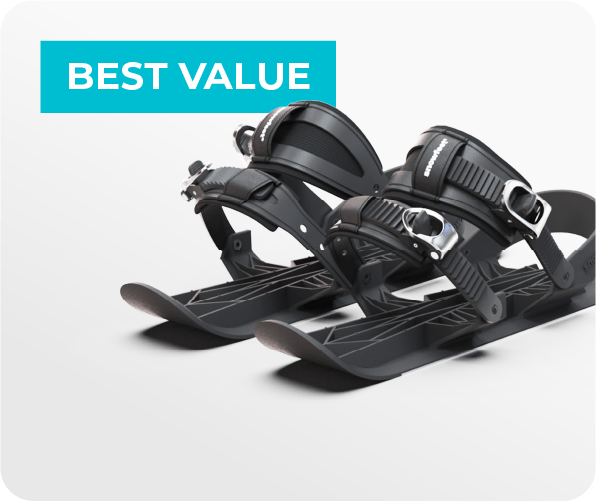



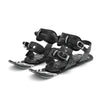
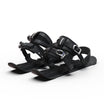
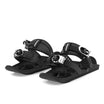

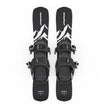
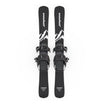

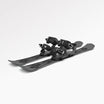
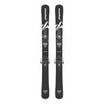
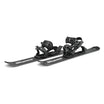
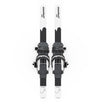





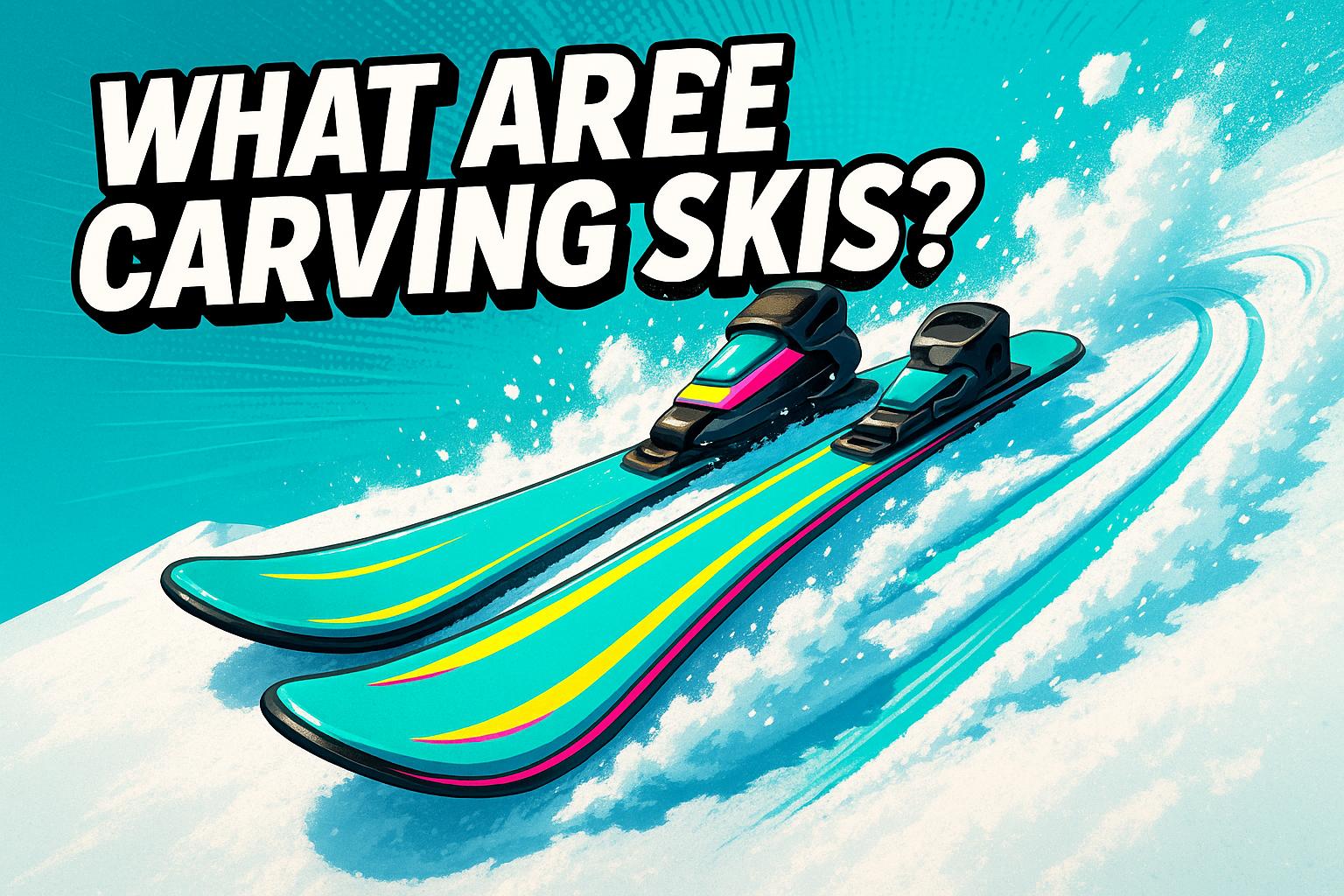
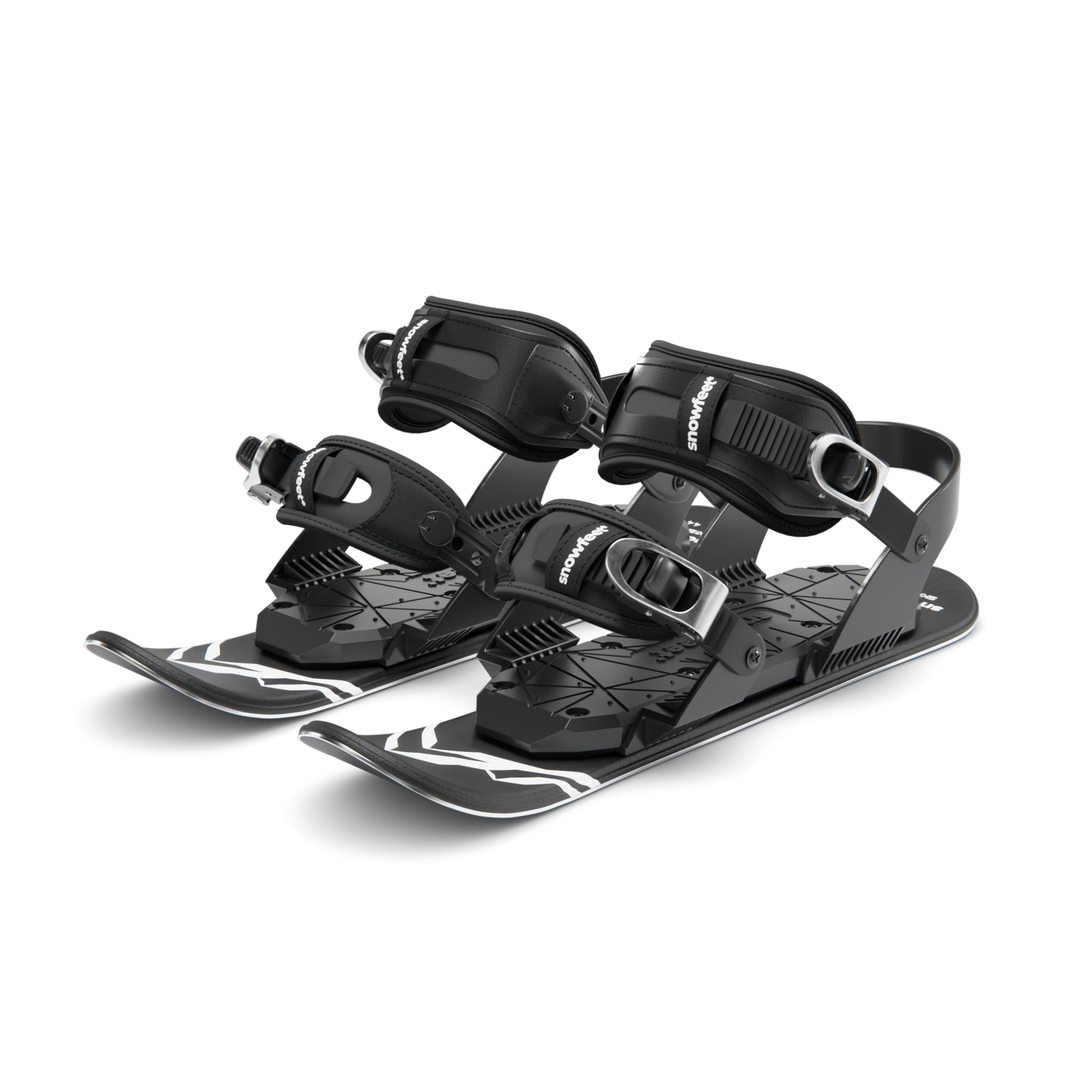

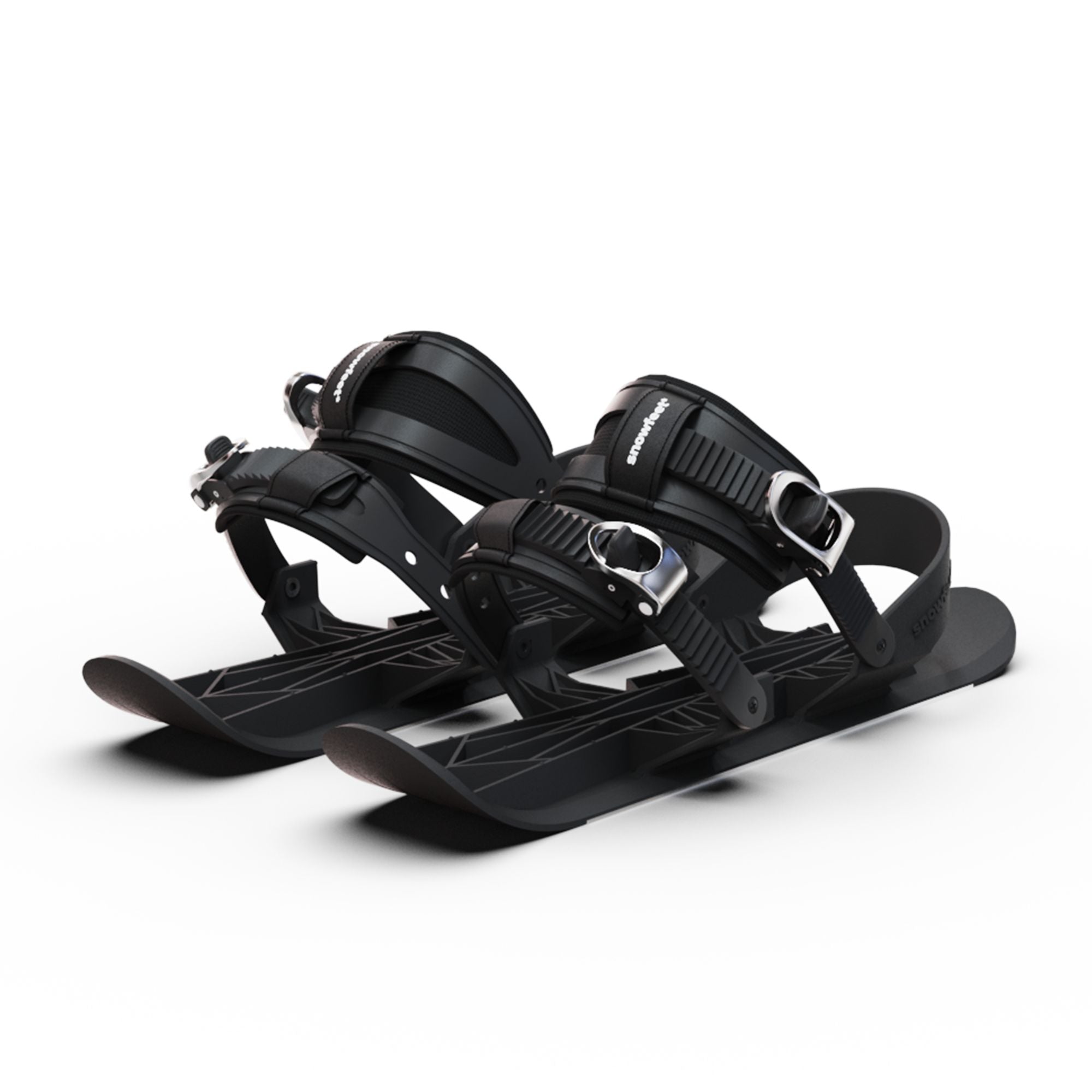
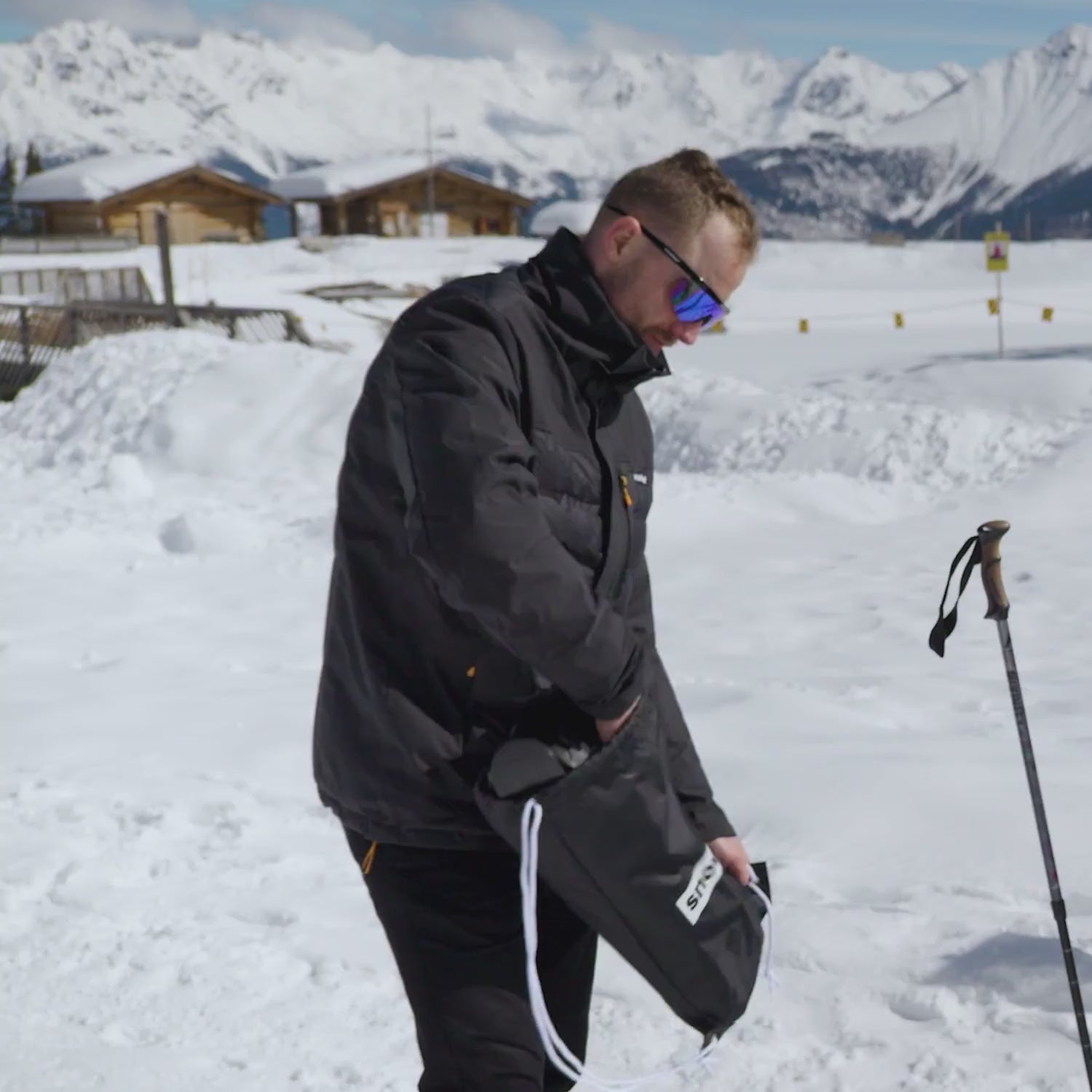
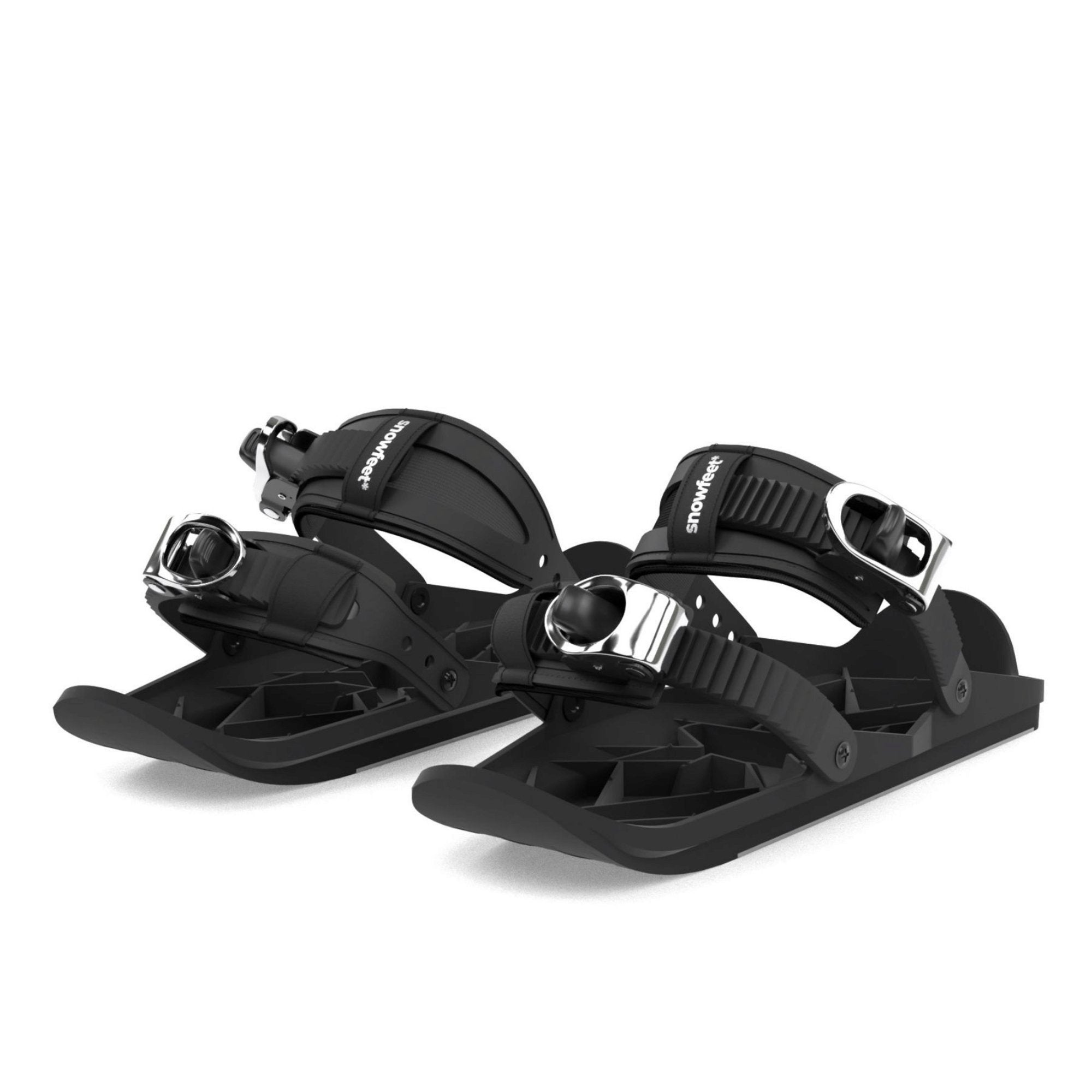
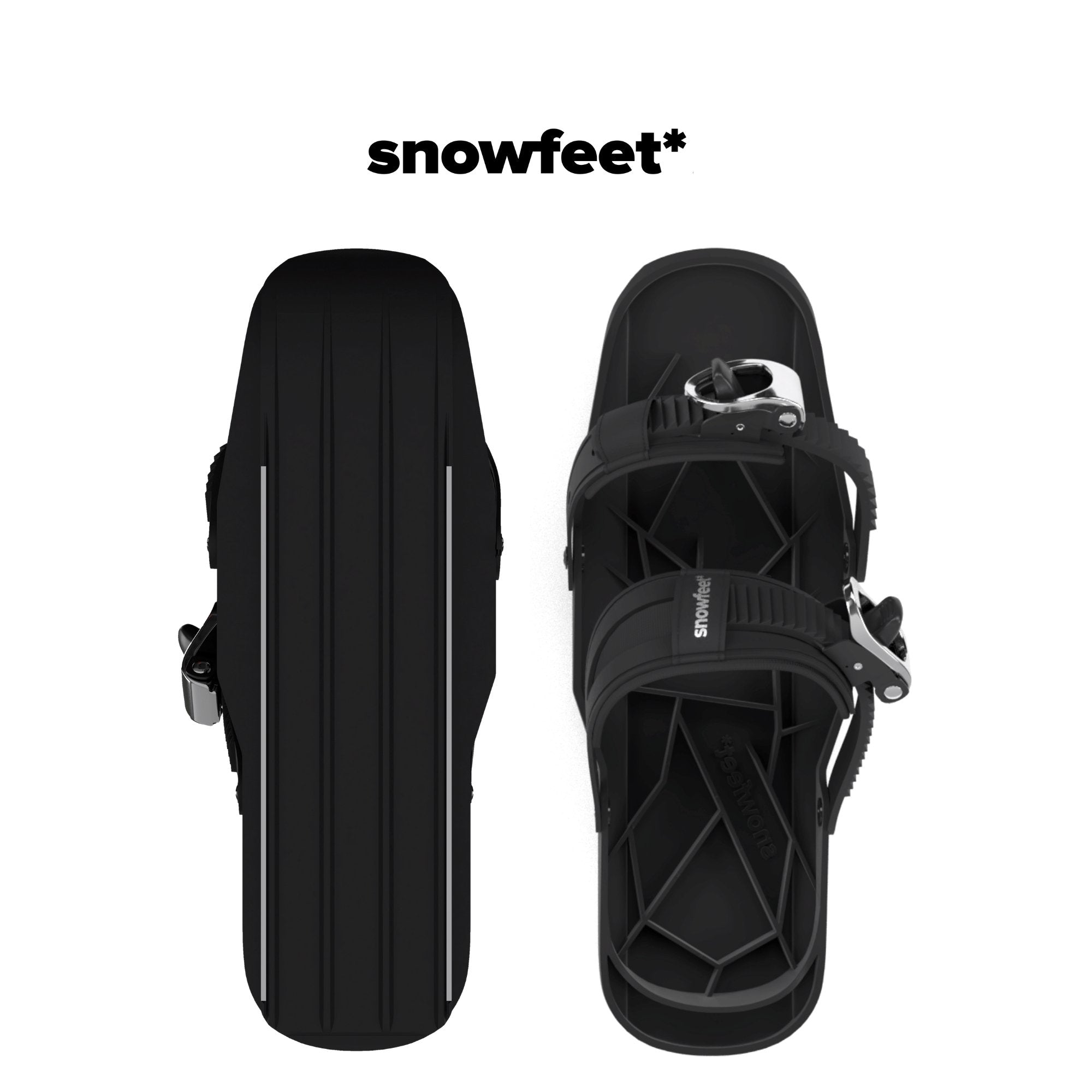
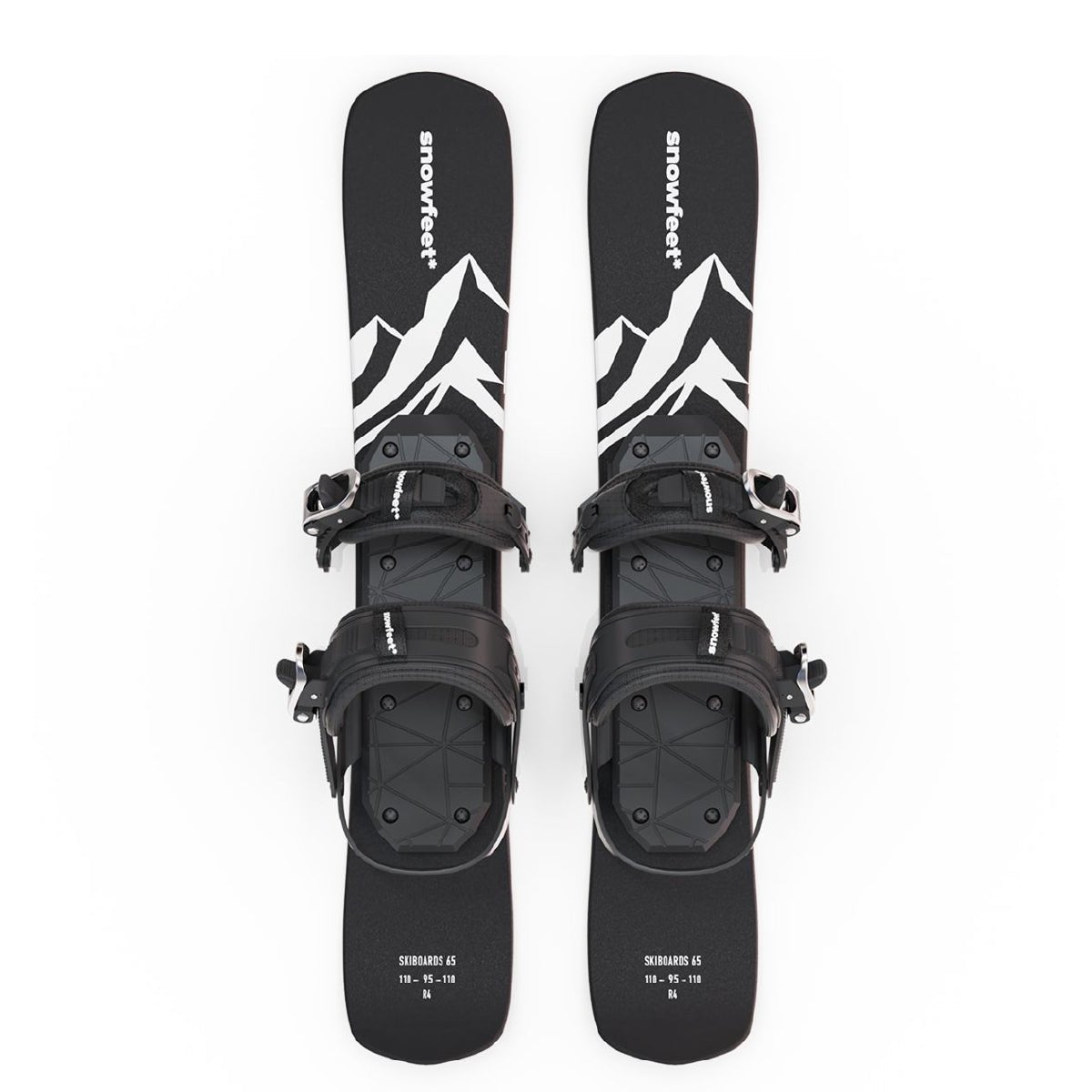
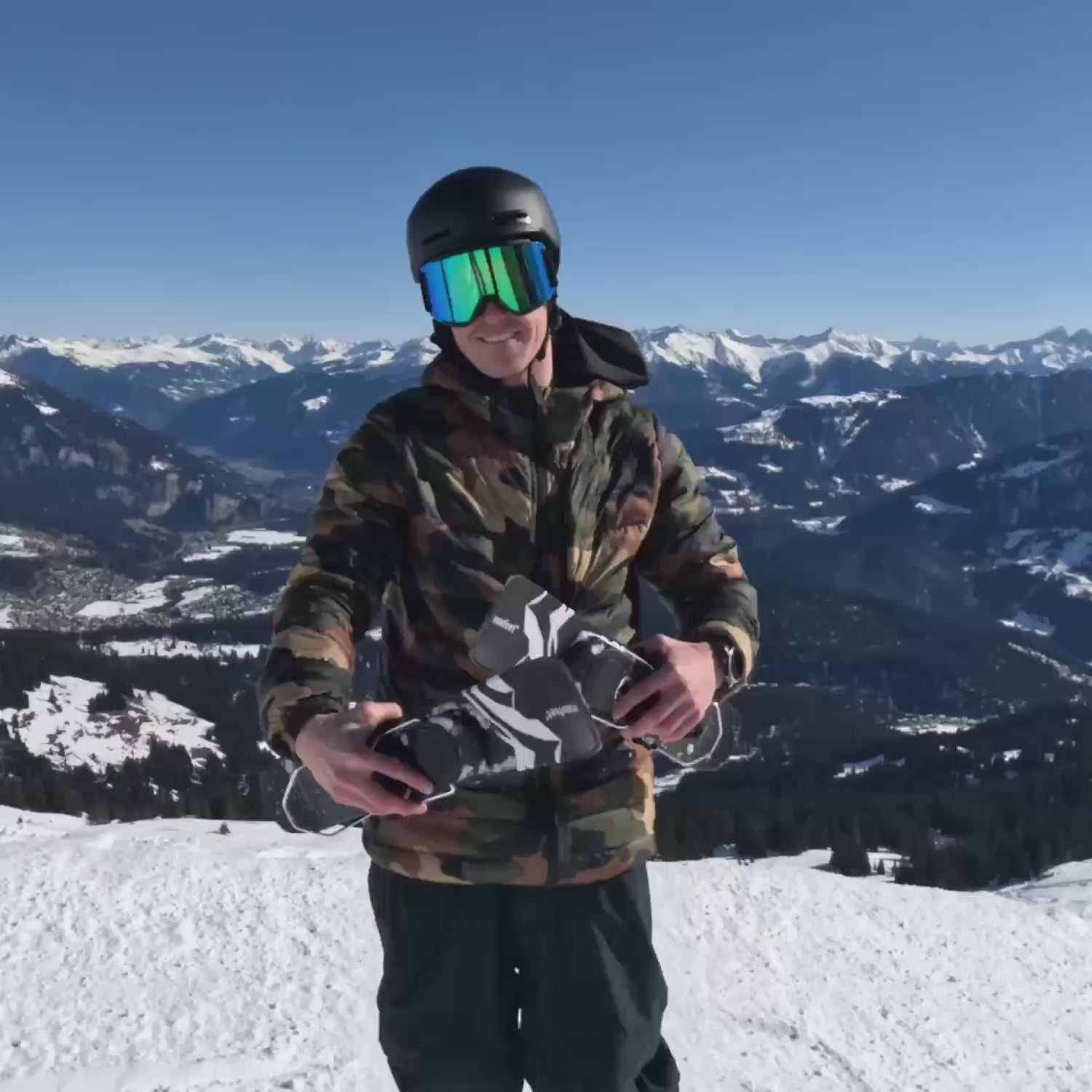
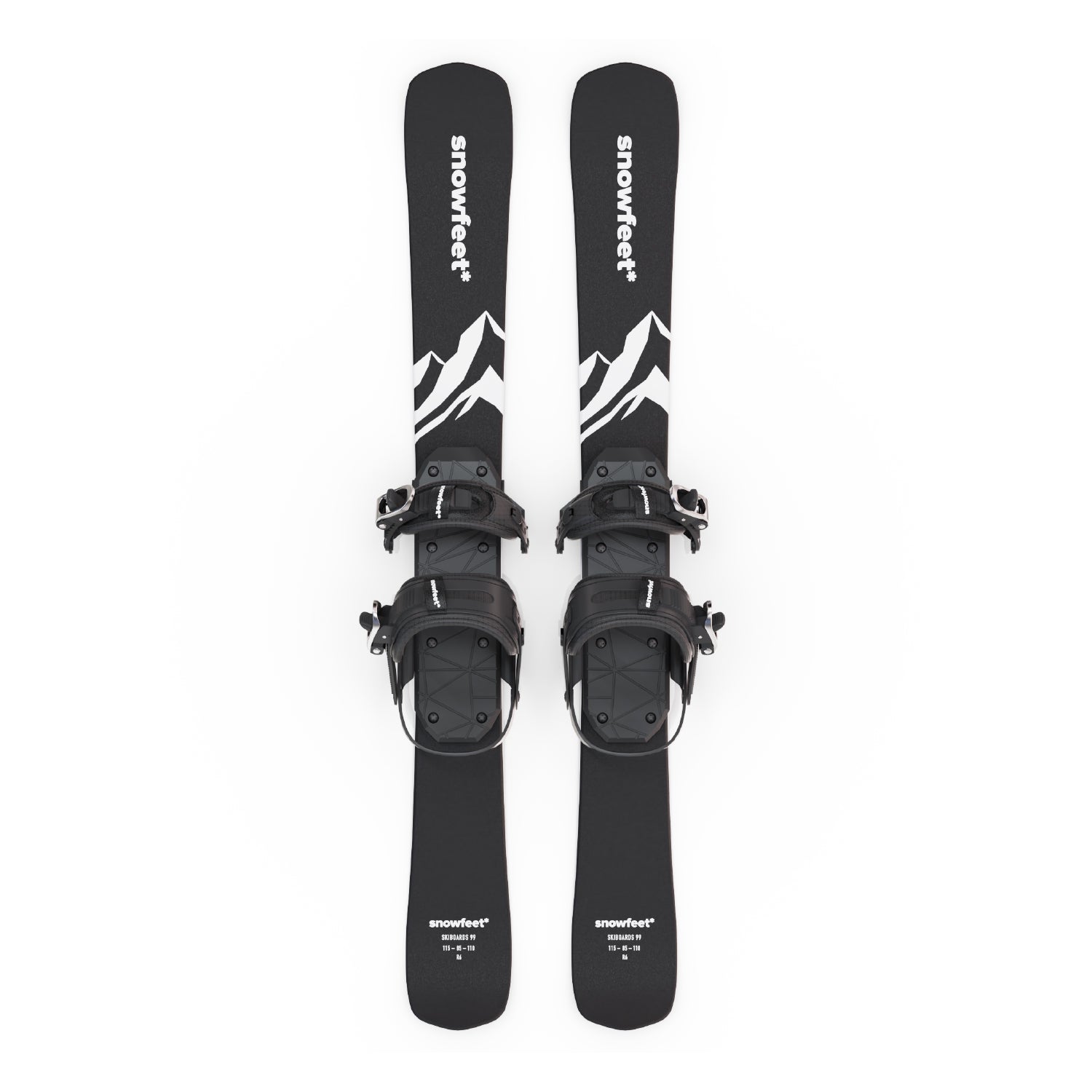
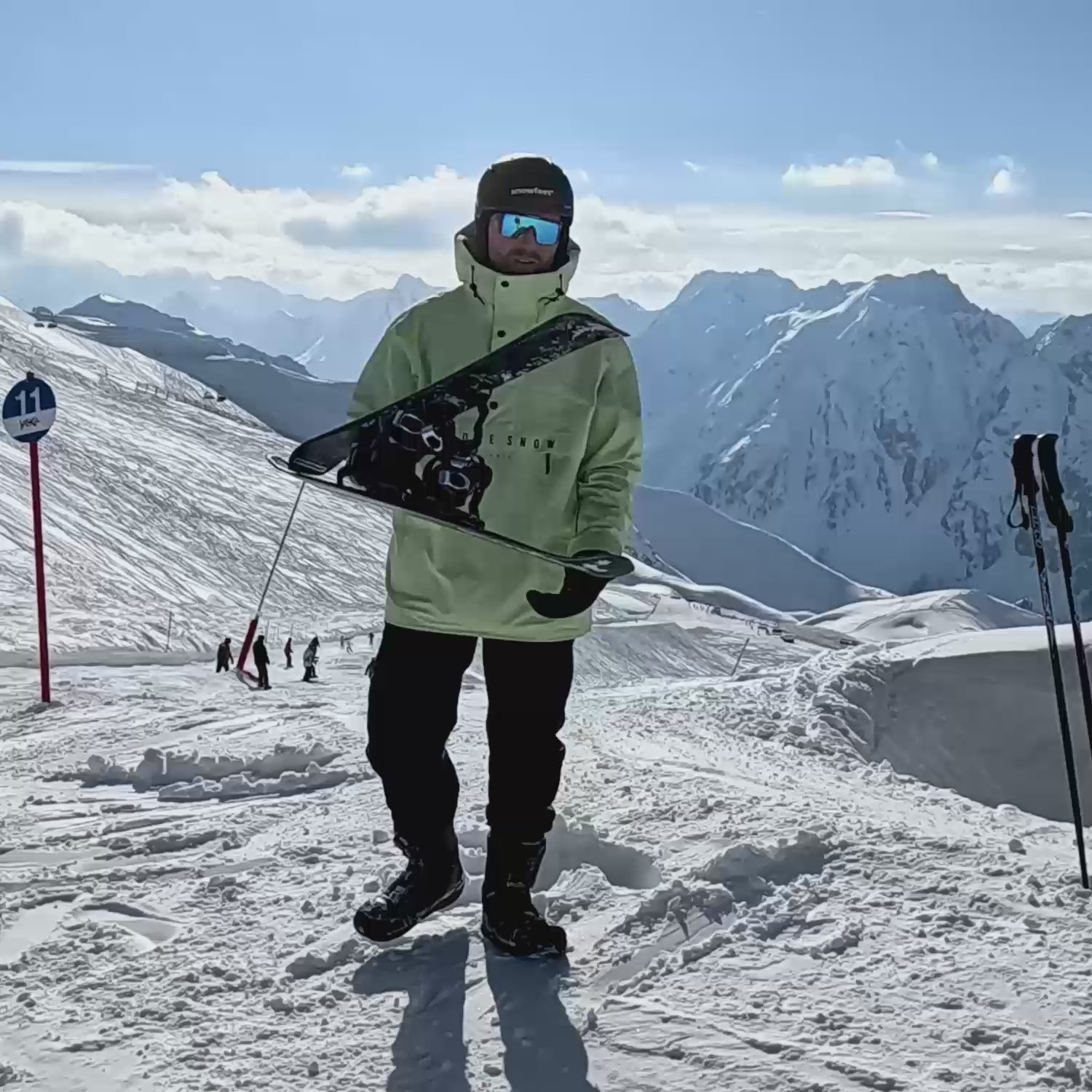
コメントを残す
このサイトはhCaptchaによって保護されており、hCaptchaプライバシーポリシーおよび利用規約が適用されます。